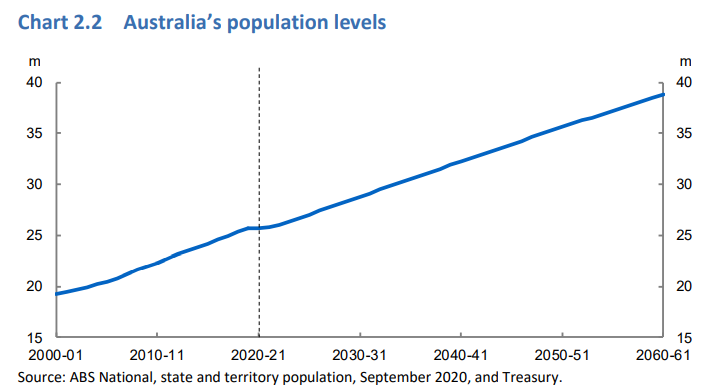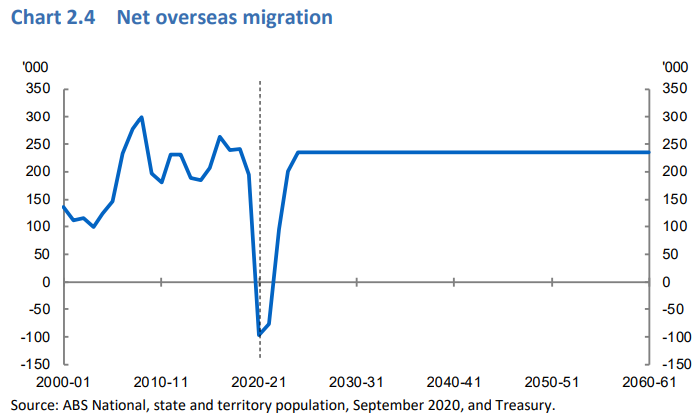Earlier this year, the New Zealand Government tasked the Productivity Commission (PC) with undertaking a system-wide review of the nation’s immigration program, with particular focus on the “impact of immigration on the labour market, housing and associated infrastructure, and the natural environment”.
The goal of the inquiry is to “enable New Zealand to strategically optimise its immigration settings” so that it maximises community wellbeing and living standards.
Around the same time, the New Zealand PC also released a report, entitled “New Zealand firms: Reaching for the frontier”, which explicitly noted that successive governments have enabled high levels of immigration without targeting this to close the skills gap of New Zealand workers. This mass immigration program has, in turn, resulted in high levels of labour force participation but poor productivity and low wages, while also disincentivising firms from undertaking productivity-enhancing investment.
Accordingly, the PC advised the government to wean New Zealand firms off their heavy reliance on migrant workers:
Despite large inflows of migrants to New Zealand over the last 10 years, skilled labour shortages continue. This suggests an ongoing mismatch between the supply of labour and the needs of firms…
The Government should commission a review of migration policy. The review should consider the optimal level and mix of permanent and temporary migrants to support innovation and productivity…The review should also look to reduce inflows of low-skilled and temporary migrant workers over time…
New Zealand businesses are typically capital-shallow (ie, workers have limited equipment and other capital goods to work with). Capital shallowness holds down labour productivity…
The ready availability of labour at modest or low wages (eg, through immigration policies that allow high levels of low-skill migration) has not helped either, because it has reduced firms’ incentives to invest in labour-saving and productivity-enhancing equipment…
Yesterday, the New Zealand PC released its preliminary findings and recommendations from its immigration inquiry, which warns that pre-COVID rates of immigration into New Zealand are unsustainable. From Interest.co.nz:
The pre-Covid rates of immigration into New Zealand appear to be unsustainable, the Productivity Commission says.
It bases this conclusion on “the inability or unwillingness to build the infrastructure needed to support and settle people in the community”…
Commission chair Ganesh Nana said… “New Zealand has struggled for a long time to absorb and accommodate more people well. Infrastructure and housing supply has not kept up with population growth, creating pressures that affect the wellbeing of both migrants and New Zealanders”.
“To ensure immigration contributes to the productivity and wellbeing of New Zealanders, governments need to build the assets and infrastructure needed to support a growing population, in preparation for the number of new residents, ahead of time”.
The very same criticisms can be levelled at Australia, where 15 years of extreme immigration pre-COVID ran well ahead of Australia’s absorptive capacity, according to Infrastructure Australia:
“Infrastructure delivery is struggling to keep pace with rapid population growth and change. Our largest cities are ‘playing catch up’ in delivering infrastructure to support population growth… Our infrastructure funding mechanisms have not kept pace with growth… Communities are increasingly disappointed by their experience of growth…”
“Construction of new infrastructure is often more expensive, due to the need to tunnel under existing structures or purchase land at higher costs. The small scale, incremental nature of growth in established areas can also lead to an over-reliance on existing infrastructure, which can result in congestion and overcrowding”.
Infrastructure Victoria this year came up with similar conclusions.
Even this year’s Intergenerational Report (IGR) warned that Australia’s immigration intake needs to be at a level that is “at or below the capacity” of destination cities to absorb them, and requires “careful planning by all levels of government”:
The economic and social pressures and capacity constraints that result from an inward flow of migrants also need to be managed carefully. Migration should be kept at or below the capacity of the destination city or region to absorb new migrants, taking into account impacts on incumbent populations…
Governments at all levels need to ensure that planning and infrastructure provision keep pace with current and future migration rates and ensure that migrants have access to essential services – such as public transport, support services and housing – and can meaningfully integrate into society.
This requires transparency, consistent decision making and careful planning by all levels of government.
Nevertheless, the IGR ignored its own warning and projected that Australia’s population will grow by a whopping 13.1 million people (~50%) over the next 40 years to 38.8 million people, off the back of 235,000 annual net overseas migration. This is the equivalent to adding another Sydney, Melbourne plus Brisbane to Australia’s existing population.


In the 20 years before COVID hit, Australia’s population increased by 6.5 million people – exactly half the level projected by the IGR, with Sydney and Melbourne each adding around 1.6 million and 1.8 million people respectively over that time.
Thus, if Australia’s population was to follow the IGR’s projected trajectory, we would effectively twice repeat the population growth experienced over 2000 to 2020, with Sydney and Melbourne each growing by another 3.2 million and 3.6 million people respectively over the next 40 years!
Does anybody honestly believe that having Sydney and Melbourne add another 3.2 million and 3.6 million people over just 40 years would be “at or below the capacity” of these cities “to absorb new migrants”? Or that such strong population growth would be “managed carefully” with “planning and infrastructure provision keep[ing] pace with current and future migration rates” and “consistent decision making and careful planning by all levels of government”?
The mass immigration program of 2000 to 2020 was managed appallingly and crush loaded everything in sight, resulting in widespread infrastructure bottlenecks across Australia’s major cities and reduced liveability.
Repeating the experience twice over again, as projected by the IGR, and expecting better results this time around is obviously delusional and the very definition of insanity.
The Morrison Government should (but won’t) initiate a similar review by our Productivity Commission, rather than kowtowing to its business lobbyist mates and declaring open immigration war on Australians.

